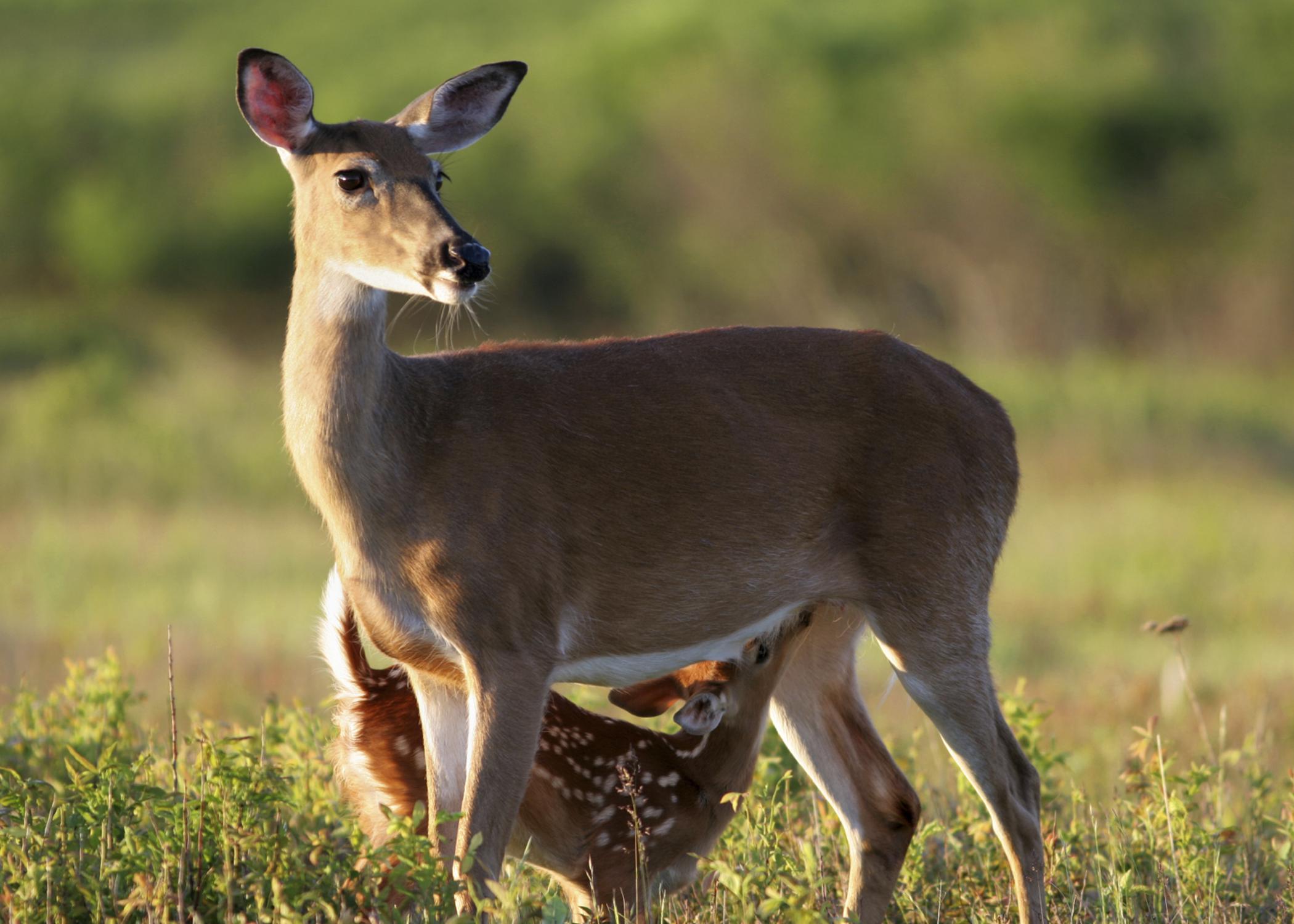Information Possibly Outdated
The information presented on this page was originally released on July 10, 2015. It may not be outdated, but please search our site for more current information. If you plan to quote or reference this information in a publication, please check with the Extension specialist or author before proceeding.
Mother does almost never abandon their fawns
STARKVILLE, Miss. -- For many of Mississippi’s wild animals, winter and spring are times of courtship. Bucks chase does across pastures during the winter, and gobblers roam the woods listening and looking for receptive hens during the spring.
Courtship is Mother Nature’s way of sorting out which males are fittest and should father the next generation of offspring. Males typically fight among themselves to determine who is the strongest, and then they show off in front of females in hopes of winning their affection. Sounds familiar, doesn’t it? Of course, the biological result of all these activities is production of fit offspring needed to grow and sustain a healthy population of wild animals.
For Mississippi’s white-tailed deer, the breeding season, or “rut,” varies throughout the state but typically begins from late November in some areas to late January in other areas. The rut usually lasts about one month, and most breeding takes place over a two-week period. After breeding has occurred, the gestation period is seven months.
So, for a little more than 200 days, a mother doe has one, two or sometimes three fawns growing inside her. In areas where the rut occurs in late November, fawns will be born in July. Areas where the rut occurs in late January will have fawns being born in September. Growing fawns costs the mother does a lot of energy, and providing milk for the young deer is just as costly. Does have to consume a lot of high-quality food to produce the right amounts of milk.
When you consider the time and energy that a mother doe has invested in her fawns, there’s just no way she will abandon them. Each summer, many people will encounter fawns hiding in the grass, pasture or forest and think that they have been abandoned. However, that is rarely the case. Because the mother has to eat so often to generate milk for the fawn, it’s routine for her to leave the fawn in a hiding place and then return to nurse the fawn. Only when the fawns are older and capable of walking and running do they accompany their mothers when they go in search of food.
There are certainly instances where fawns have been abandoned, and this usually happens if the mother has been killed in a car accident or something similar. But if the mother doe is alive and well, she will rarely abandon her fawn. So what do you do if you know that the mother doe has been killed? Talk to a professional with the Mississippi Department of Wildlife, Fisheries and Parks (MDWFP). MDWFP has regulatory authority over all our wildlife resources, so it’s always best to give them a call so a conservation officer or wildlife biologist can provide the best advice for your situation. In some cases, there may be a wildlife rehabilitator organization nearby.

Editor’s Note: Extension Outdoors is a column authored by several different experts in the Mississippi State University Extension Service.







